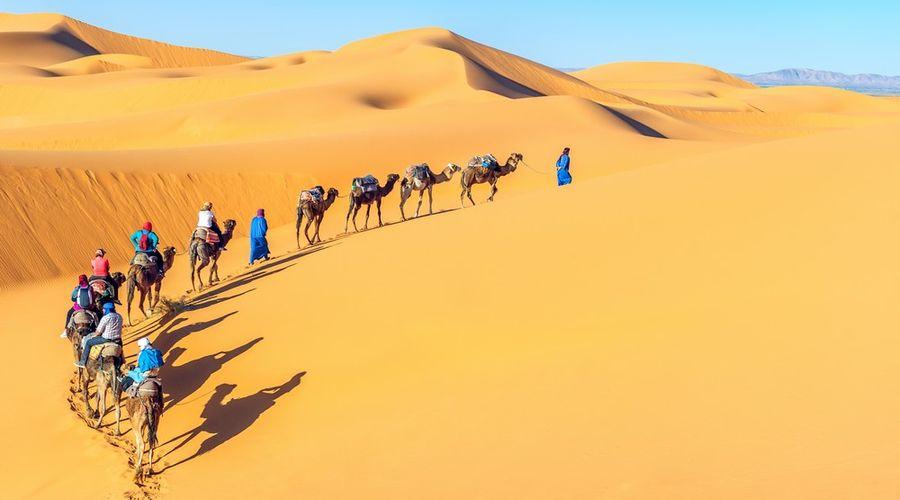Trip is full . . . waitlist available!
Morocco: A Personal Adventure Discovering
the Culture of the Berbers
with Kinga Nichols Bledsoe
April 13 - 27, 2026
Marrakesh ~ N'Kob ~ Erg Chebbi ~ Camel Ride & Glamping ~ Ouarzazate ~ Taroudant ~ Essaouira
Morocco is wonderfully rich and exotic, a fascinating blend of European, Arabic and African culture. It has recently undergone a stellar modernization but 70 years ago was still mostly a medieval subsistence society, steeped in tribal traditions, historic and ethnic loyalties and political intrigue. It has emerged a jewel of tourism and agriculture in the world and is a global leader in biotech and solar energy research and development. Morocco has vast tracts of desert, sweeping ridges of red sand, and sharp multi-colored mountain ridges that are as old as the sea. With thousands of miles of coastline and the Sahara to the East, Morocco has been a trading route for Central Africa, the mid-East and Asia for thousa 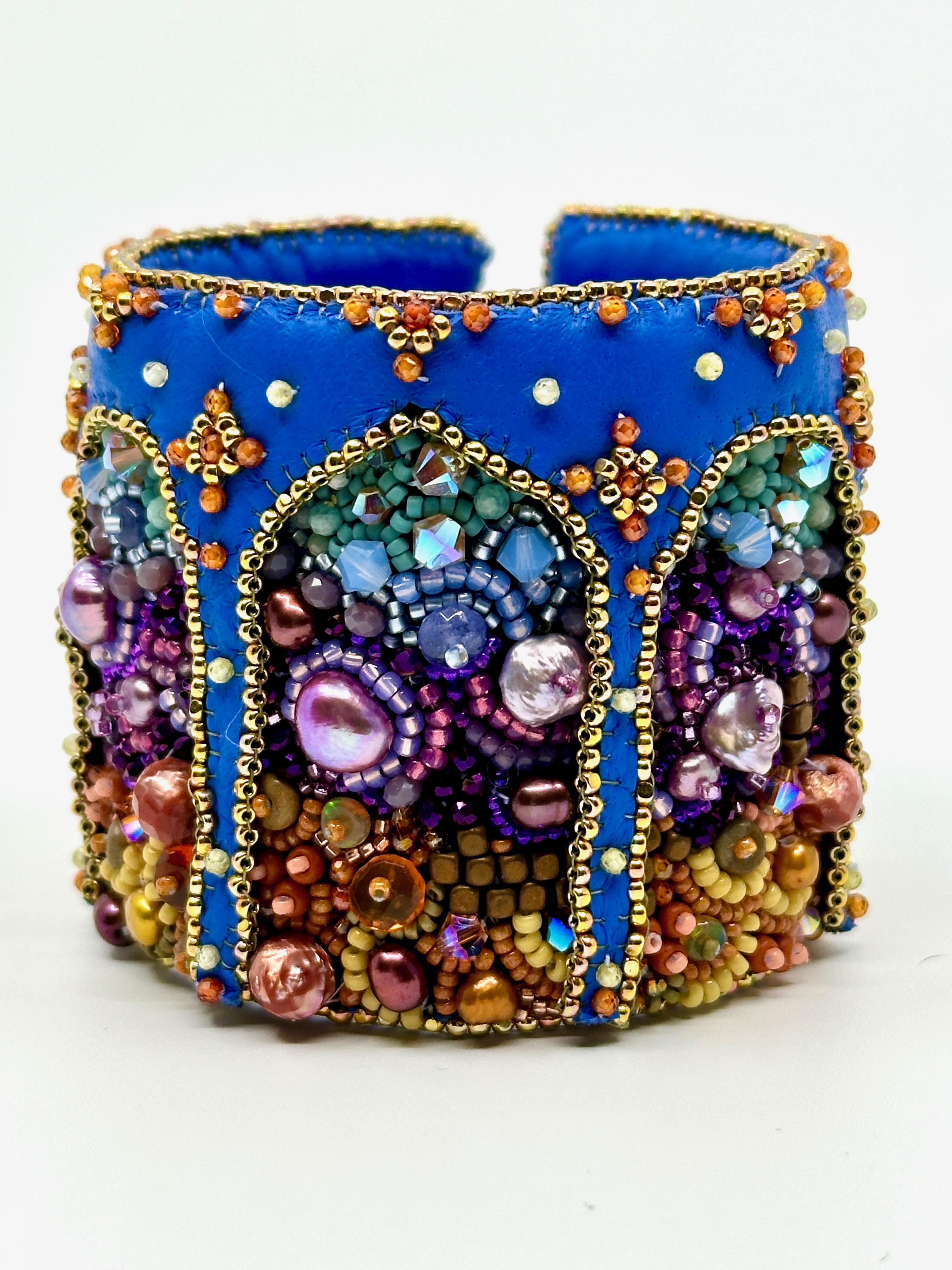 nds of years.
nds of years.
Because it is a melting pot of all the crafts and treasures brought here by travelers, we will be surrounded by the color and complexity of marvelous mosaics and painted walls, flamboyant bead jewelry and detailed carved woods and plaster, eastern architecture, and glorious gardens. It is a place of scents and spices, green oases and harsh rock landscapes, bustling medinas, the call of the muezzin, and the friendly smiles of its gentle and elegantly mannered people.
In this itinerary there is something for everyone. We will visit large and small Berber towns and villages, see them in their daily life and be able to spend time with them. We will have access to the history and architecture, museums and palaces. We may also choose to go to the 'hammam' (steam baths) and see the daily aspects of their lives. We can have Henna painted on the skin (not permanent) and take advantage of the wonderful and exotic spa treatments on offer. There is shopping for traditional handcrafts, for fine Moroccan products, and for European wares in the modern city areas.
And during our journey, we will work on this beautiful project designed by Kinga, that is inspired by our itinerary!
Itinerary
Day 1. Monday, April 13. Arrive in Marrakesh.
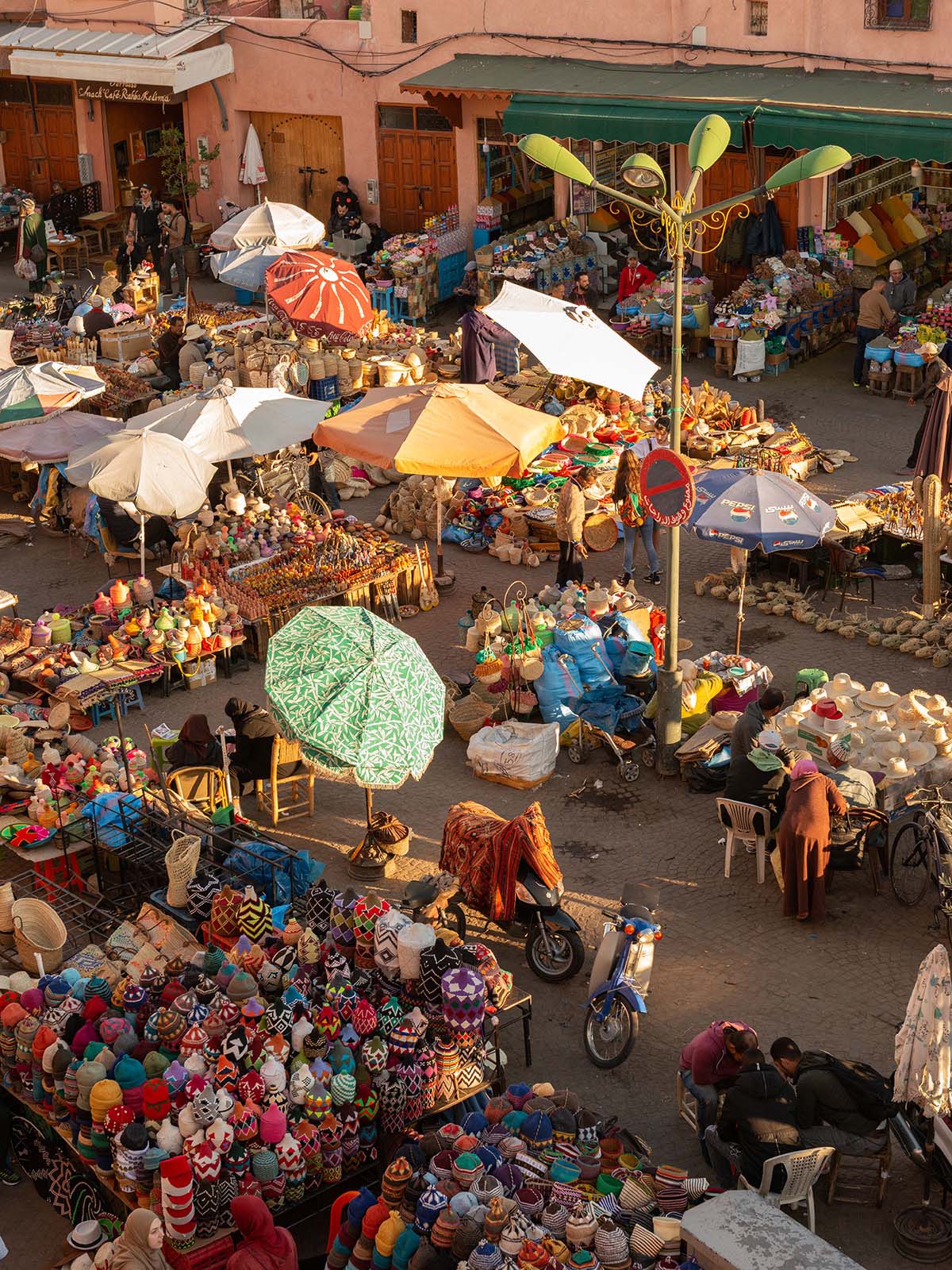 Today you will fly into Marrakesh Menara Airport (code RAK). You will be transported to our Riad (a traditional Moroccan house centered around a courtyard). In the evening, we will visit the famous J'maa el F'naa marketplace, where we will take in the sights, sounds, and smells of Marrakesh’s streets. We
Today you will fly into Marrakesh Menara Airport (code RAK). You will be transported to our Riad (a traditional Moroccan house centered around a courtyard). In the evening, we will visit the famous J'maa el F'naa marketplace, where we will take in the sights, sounds, and smells of Marrakesh’s streets. We 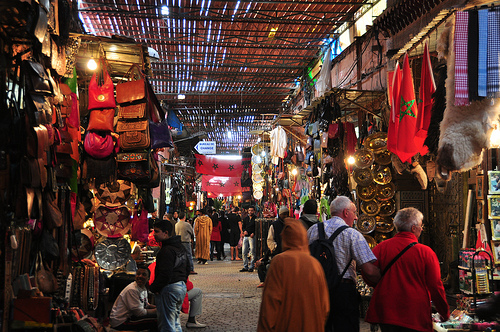
Meal included: Dinner
Day 2. Tuesday, April 14. Exploring Marrakesh!
Today we will have a city tour that will include visiting a souk (market), Kutoubia Mosque, Bahia Palace, and the Jewish quarter. There will be an option for those interested to visit the Yves St Laurent museum. We will have dinner on a terrace overlooking the Medina.
Meals included: Breakfast, Dinner
Day 3. Wednesday, April 15. Road trip--Atlas Mountains to the Sahara.
We’ll travel via minibus through the Atlas Mountains towards the Sahara via Tizi'n' Tischka pass and experience 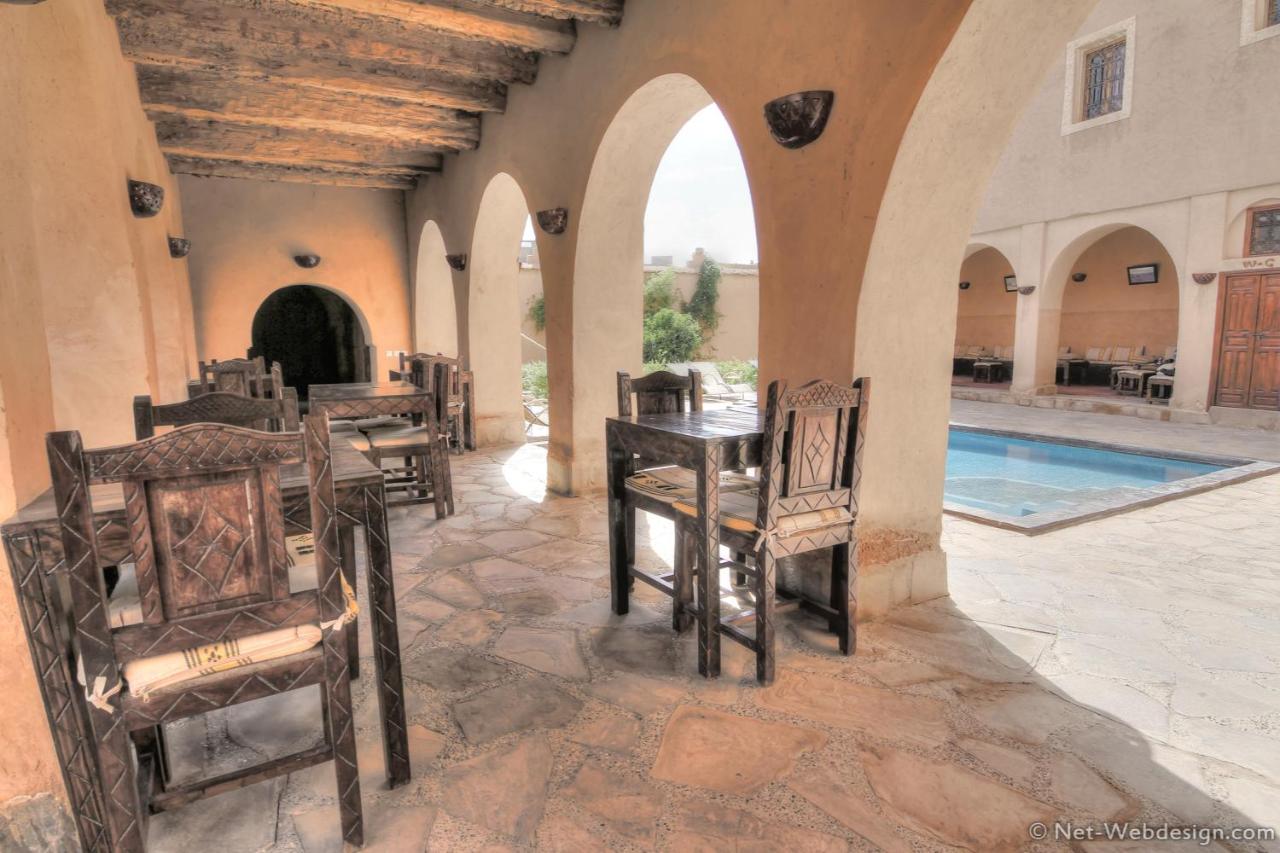 astounding views along the way. We’ll stop at Ait Ben Haddou, the famous Ksar (fortified village) that is a great example of
astounding views along the way. We’ll stop at Ait Ben Haddou, the famous Ksar (fortified village) that is a great example of 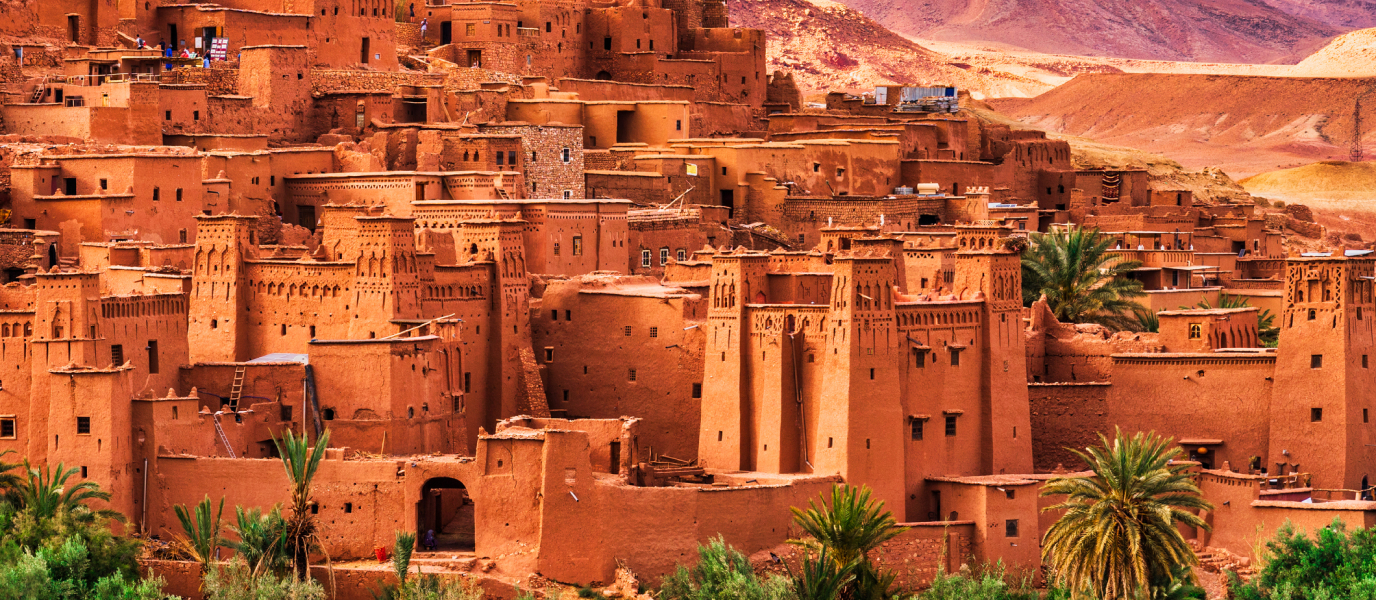 Moroccan earthen clay architecture and has been a UNESCO World Heritage Site since 1987. During our four-hour journey, we’ll enjoy lunch on a terrace overlooking the Ksar.
Moroccan earthen clay architecture and has been a UNESCO World Heritage Site since 1987. During our four-hour journey, we’ll enjoy lunch on a terrace overlooking the Ksar.
Meals included: Breakfast, Dinner
Day 4. Thursday, April 16. Workshop with Kinga.
Today will be our first workshop with Kinga on a project inspired by this Beadventure’s itinerary. This Kasbah also is a wonderful place spend some time relaxing by the pool.
Meals included: Breakfast, Dinner
Day 5. Friday, April 17. Erg Chebbi: Camel ride and "Glamping!"
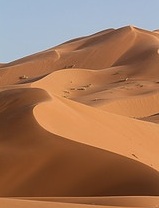 We will start out the day with drive through the desert during which we’ll keep a lookout for nomads and their
We will start out the day with drive through the desert during which we’ll keep a lookout for nomads and their 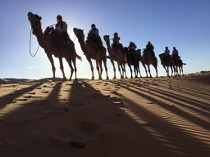 herds of camels. We’ll stop for lunch at the most incredible private bazaar, with its carpets, jewelry, antiques, and locally made Berber pizza! In the cool of the late afternoon we will embark on a camel ride to our comfortable and atmospheric desert camp--Erg Chebbi. From here we’ll watch the sunset and glamp touareg-style in the dunes, which will include drums, touareg singing and dancing (a style that mixes electric blues with Middle Eastern and African sounds) around the fire!
herds of camels. We’ll stop for lunch at the most incredible private bazaar, with its carpets, jewelry, antiques, and locally made Berber pizza! In the cool of the late afternoon we will embark on a camel ride to our comfortable and atmospheric desert camp--Erg Chebbi. From here we’ll watch the sunset and glamp touareg-style in the dunes, which will include drums, touareg singing and dancing (a style that mixes electric blues with Middle Eastern and African sounds) around the fire!
Meals included: Breakfast, Lunch, Dinner
Day 6. Saturday, April 18. Next Stop: Tinjdad.
This morning we’ll be up early to see the sunrise by camel after which we’ll leave the dunes to return west via a stop in Rissani. Along the way we’ll visit the historic sites of Sijil Messa and Sidi Ben Ali Mausoleum, as well as a marble fa 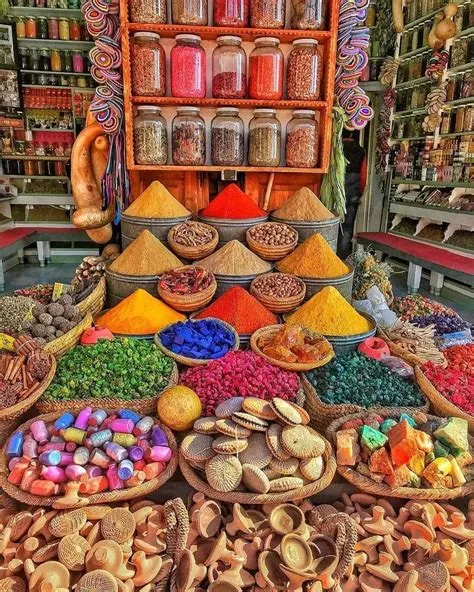 ctory with amazing fossils. It’s a three-hour drive, we’ll stop in the valley of roses to see how rose water and essential oils are made from the local “Rose of Damascus”. We spend the night at a recently restored 19th C ksar, made entirely of 'pise' (mud and straw) at Tinjdad. There’s a great private museum of local life and/or you can enjoy the pool.
ctory with amazing fossils. It’s a three-hour drive, we’ll stop in the valley of roses to see how rose water and essential oils are made from the local “Rose of Damascus”. We spend the night at a recently restored 19th C ksar, made entirely of 'pise' (mud and straw) at Tinjdad. There’s a great private museum of local life and/or you can enjoy the pool.
Meals included: Breakfast, Dinner
Day 7. Sunday. April 19. Quarazate--the Hollywood of Morocco.
We will start our drive westward to Ouarzazate. We will pass through the 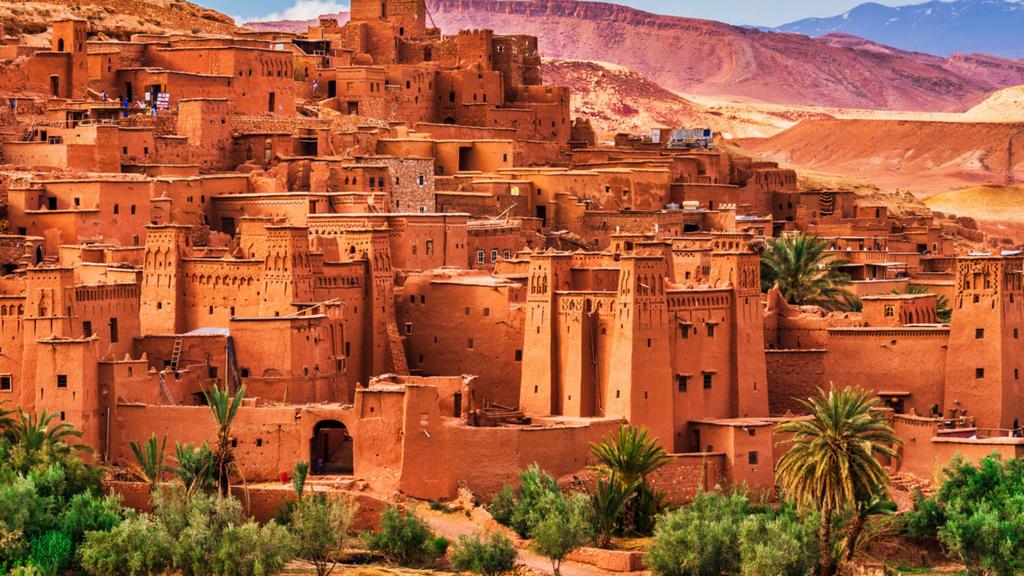 valleyofthe roses and will stop to smell the perfumes, soaps, and creams made here. Will also will pass through Skoura, an oasis on the edge of the Atlas famous for its kasbahs—"Moroccan castles.” We will stay in a lovely kasbah surrounded by date palms.
valleyofthe roses and will stop to smell the perfumes, soaps, and creams made here. Will also will pass through Skoura, an oasis on the edge of the Atlas famous for its kasbahs—"Moroccan castles.” We will stay in a lovely kasbah surrounded by date palms.
Meals included: Breakfast, Dinner
Day 8. Monday. April 20. Workshop and Exploration of Ouarzazate.
In the morning we’ll continue our workshop with Kinga. The afternoon will be open to visit Ouarzazate (there will be an optional tour of a film studio). There’s also some very good authentic jewelry shops that might be of interest!
Meals included: Breakfast, Dinner
Day 9 & 10. Tuesday & Wednesday, April 21 & 22. Taroudant—The “Little Marrakesh”
We’ll travel about five hours to Taroudant (aka “The Little Marrakesh”) via Taznaght, Aoulouz, which 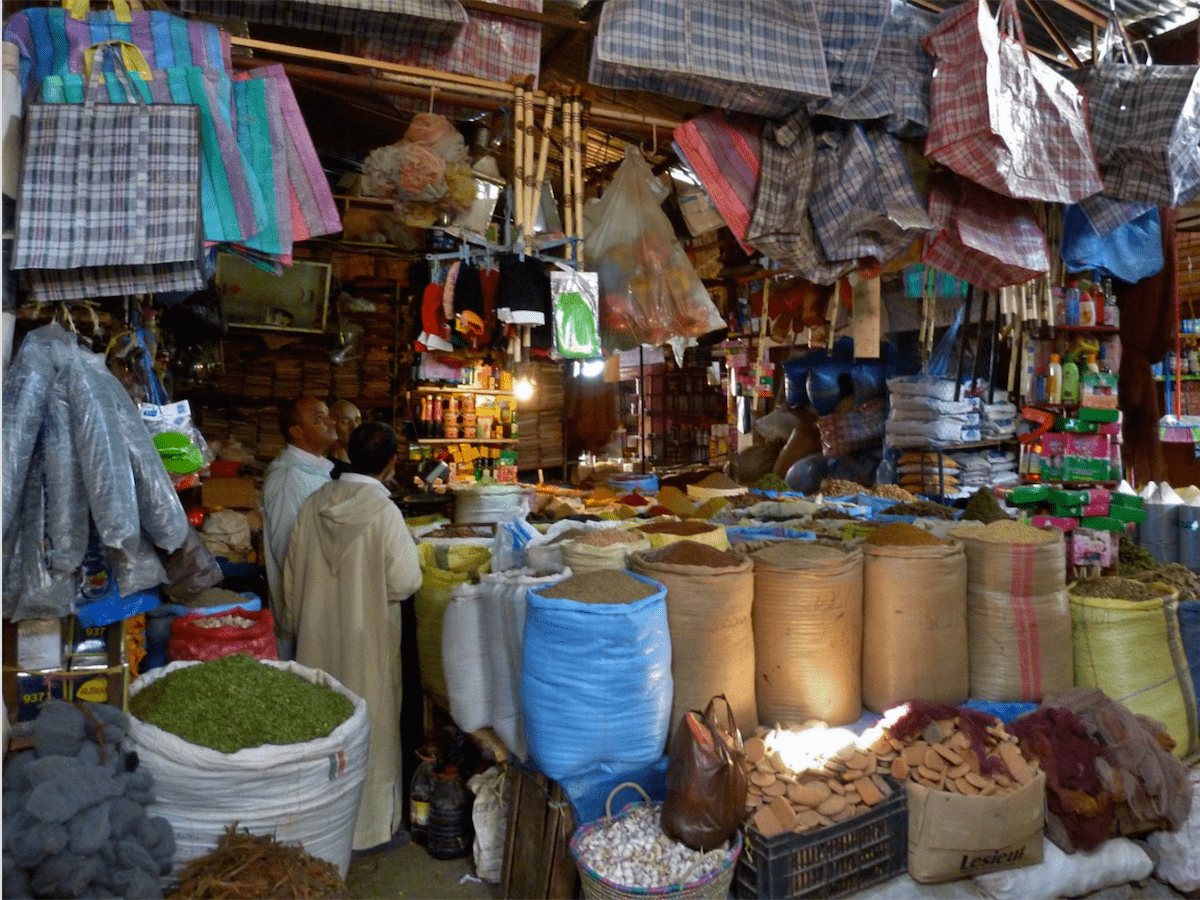 will take us south around the Atlas Mountains to the Anti-Atlas (warmer climates). During our drive we’ll see the varied agriculture of Morocco and movement of the nomads; to break the long drive we stop often—for coffee, to visit the Saffron co-operative; as well as look for goats grazing in the Argan trees alongside the road. We have lunch at a classic Moroccan roadside grill.
will take us south around the Atlas Mountains to the Anti-Atlas (warmer climates). During our drive we’ll see the varied agriculture of Morocco and movement of the nomads; to break the long drive we stop often—for coffee, to visit the Saffron co-operative; as well as look for goats grazing in the Argan trees alongside the road. We have lunch at a classic Moroccan roadside grill.
Taroudant is like Marrakesh before its modernization and is a good deal more laid back! We’ll enjoy two nights here during which you’ll be able to shop in the souk; enjoy steam baths and spas; experience great food; walk the city’s walls; view old architecture; and check out the ancient tannery. We will have another half-day workshop with Kinga on Wednesday.
Meals included: Breakfast and one dinner
Days 11-12. Thursday & Friday. April 23 & 24. Stunning City of Essaouira & Workshop.
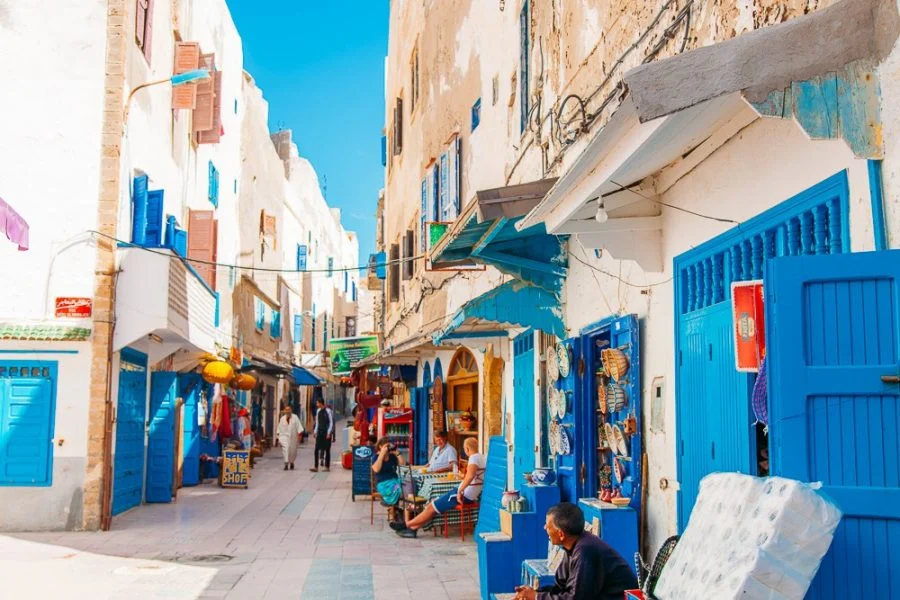 Following another four-hour drive, we’ll reach Essaouira, a stunning, white-walled city on the coast. It has a very laid-back vibe and is old and modern at the same time. There is a great beach; a laid back
Following another four-hour drive, we’ll reach Essaouira, a stunning, white-walled city on the coast. It has a very laid-back vibe and is old and modern at the same time. There is a great beach; a laid back 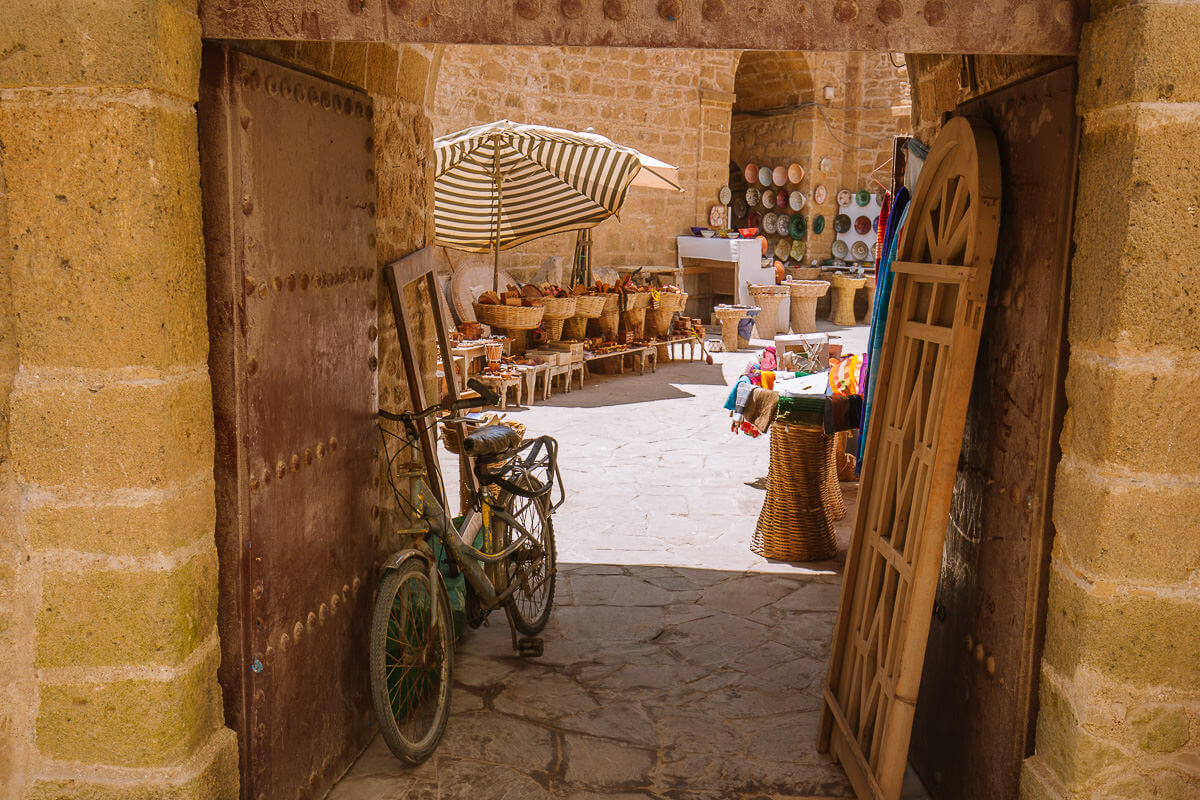 and good souk (market); a visit to the lively port to watch the fishing boats come in. Here you’ll be able to eat seafood straight from the sea and enjoy excellent restaurants or sign-up for an optional half-day Moroccan cooking class. We’ll be staying at a luxury Riad inside the walls of the medina, with a great terrace overlooking the city walls and rooms with stunning views of the sea.
and good souk (market); a visit to the lively port to watch the fishing boats come in. Here you’ll be able to eat seafood straight from the sea and enjoy excellent restaurants or sign-up for an optional half-day Moroccan cooking class. We’ll be staying at a luxury Riad inside the walls of the medina, with a great terrace overlooking the city walls and rooms with stunning views of the sea.
Meals included: Breakfast
Day 13. Saturday, April 25. Return to Marrakech.

Meals included: Breakfast, dinner
Day 14. Sunday, April 26. Enjoy Marrakech One More Day!
You’ll be able to do any last-minute shopping in the souk; wander the modern part of Marrakech (that will open your eyes to how trendy urban Moroccans are--you can almost imagine you are in Paris!) or visit the many museums and galleries, and take time to prepare for travel home.
Meals included: Breakfast, Dinner
Day 15. Monday, April 27. Depart.
Today you’ll be transferred to the Marrakesh Airport for your flight home.
Meal included: Breakfast
Optional Extension
If sufficient interest, our guide may be able to offer an extension of either additional days in Marrakech and/or travel to Fez, Meknes, and Chefchaouen. The cost is estimated at $350 per person per day.
About our Project . . ."Atlas Bound"
Kinga shares about her beautiful project designed for this Beadventure:
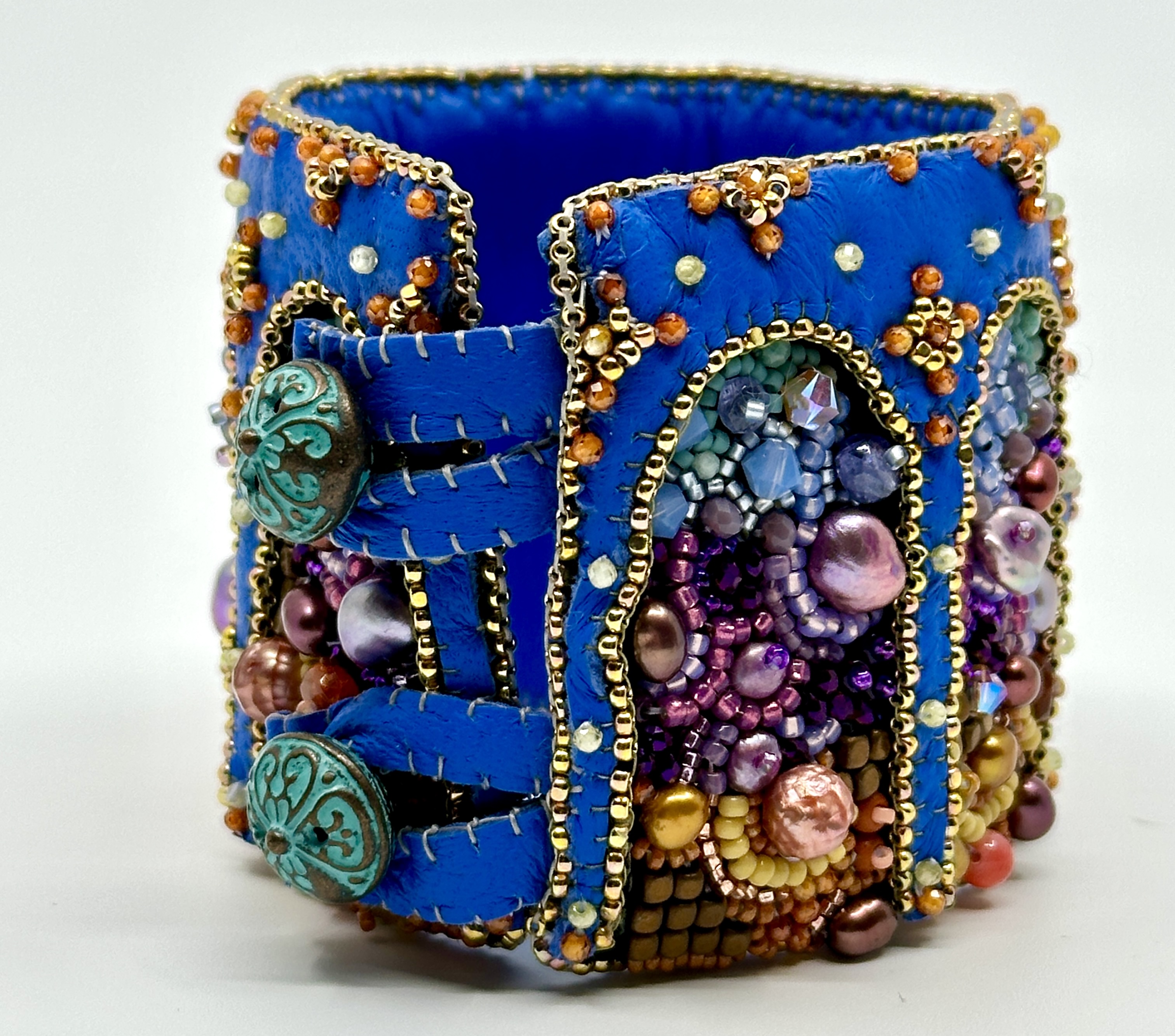 "This intricate, layered bracelet portrays a Moroccan landscape with the Atlas mountains, desert, and sky viewed from a kasbah's courtyard. Colorful and rich, this bracelet tempts with precious components I have been collecting for my own stash for decades. Things one can no longer find, such as 7 different varieties of freshwater pearls, Mexican and Ethiopian opals, hematite, chrysanthemum stone, amazonite, five types of Swarovski crystals, three types of Chinese crystals, two kinds of vintage French seed beads, and 13 varieties of Japanese seed beads. A usual bead embroidered bracelet consists of two layers--foundation and leather backing. Atlas Bound consists of four layers and it's a labor of love for sure! We will have plenty of time to work on this beastie on our adventure through Morocco, viewing t?his breathtaking landscape in real life. Create art while creating memories on this once in a lifetime tour of Morocco!"
"This intricate, layered bracelet portrays a Moroccan landscape with the Atlas mountains, desert, and sky viewed from a kasbah's courtyard. Colorful and rich, this bracelet tempts with precious components I have been collecting for my own stash for decades. Things one can no longer find, such as 7 different varieties of freshwater pearls, Mexican and Ethiopian opals, hematite, chrysanthemum stone, amazonite, five types of Swarovski crystals, three types of Chinese crystals, two kinds of vintage French seed beads, and 13 varieties of Japanese seed beads. A usual bead embroidered bracelet consists of two layers--foundation and leather backing. Atlas Bound consists of four layers and it's a labor of love for sure! We will have plenty of time to work on this beastie on our adventure through Morocco, viewing t?his breathtaking landscape in real life. Create art while creating memories on this once in a lifetime tour of Morocco!"
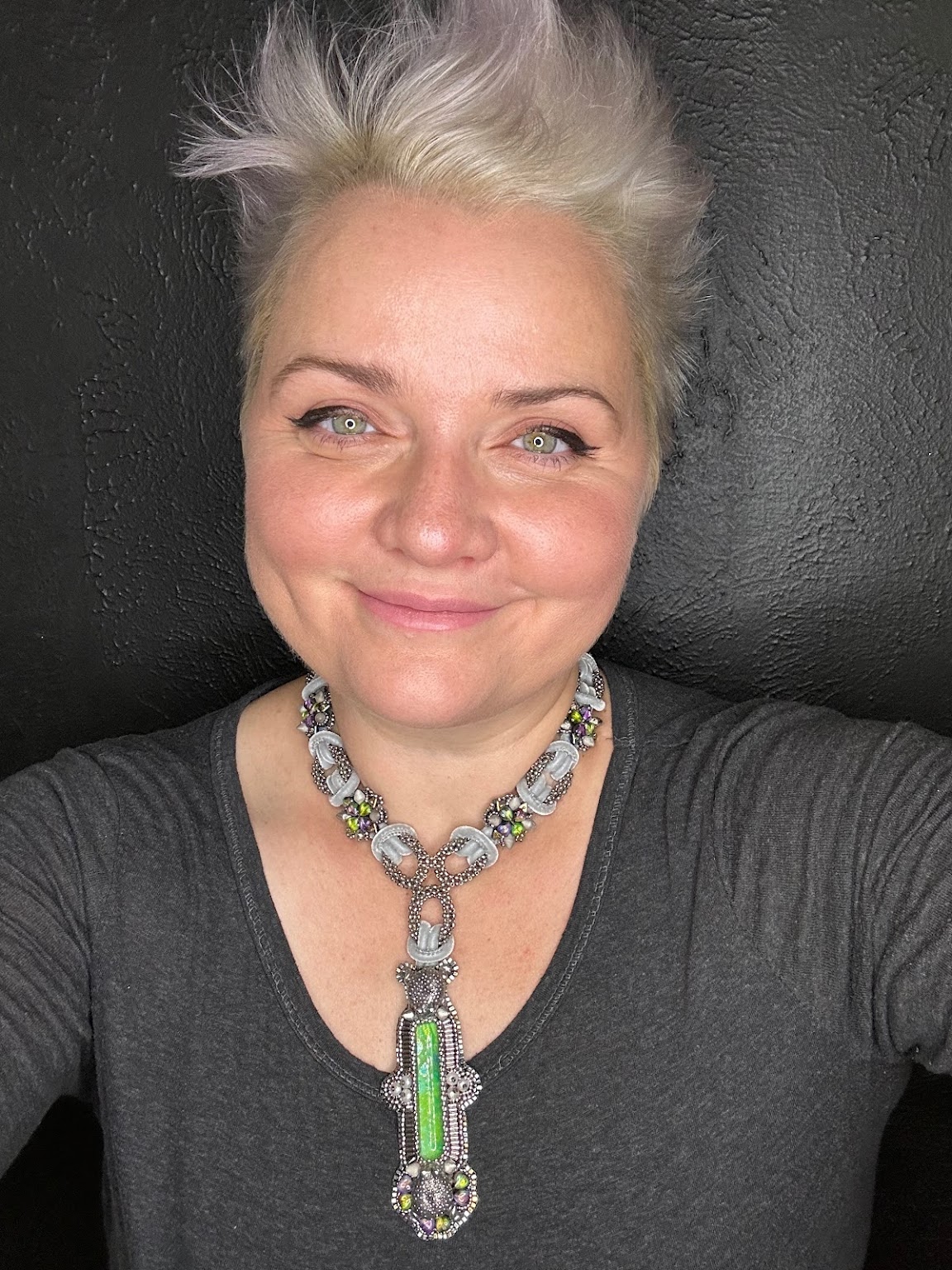 About our Teacher—Kinga Nichols Bledsoe
About our Teacher—Kinga Nichols Bledsoe
Kinga was born in 1980, in Hungary. At 19, she packed up her life in a backpack and moved to the US where she has been residing since, albeit not at the same place. She currently lives in Jackson, Michigan with her family.
One way or another Kinga has been always making things, which started turning into a career when she was painting murals at the time she lived in New York. The murals were fun, but she did not feel like painting was her calling. Eventually she picked up a Bead and Button magazine in 2007, found a bead embroidery project, and slowly but surely the obsession took over.
After that first project, she started creating her own designs and quickly found her own distinctive voice that allowed her to translate her imaginings into beadwork. Kinga is always brainstorming, and her imagination provides an endless supply of fanciful ideas that she translates into bead embroidery.
Since 2013, Kinga has been teaching her designs all over the US, and some times outside the US. Her greatest joy is planting little seeds of creativity in minds and hearts, wherever she goes. Encouraging others to embrace their own creative voice is her calling.
About Our Guides and this Itinerary . . .
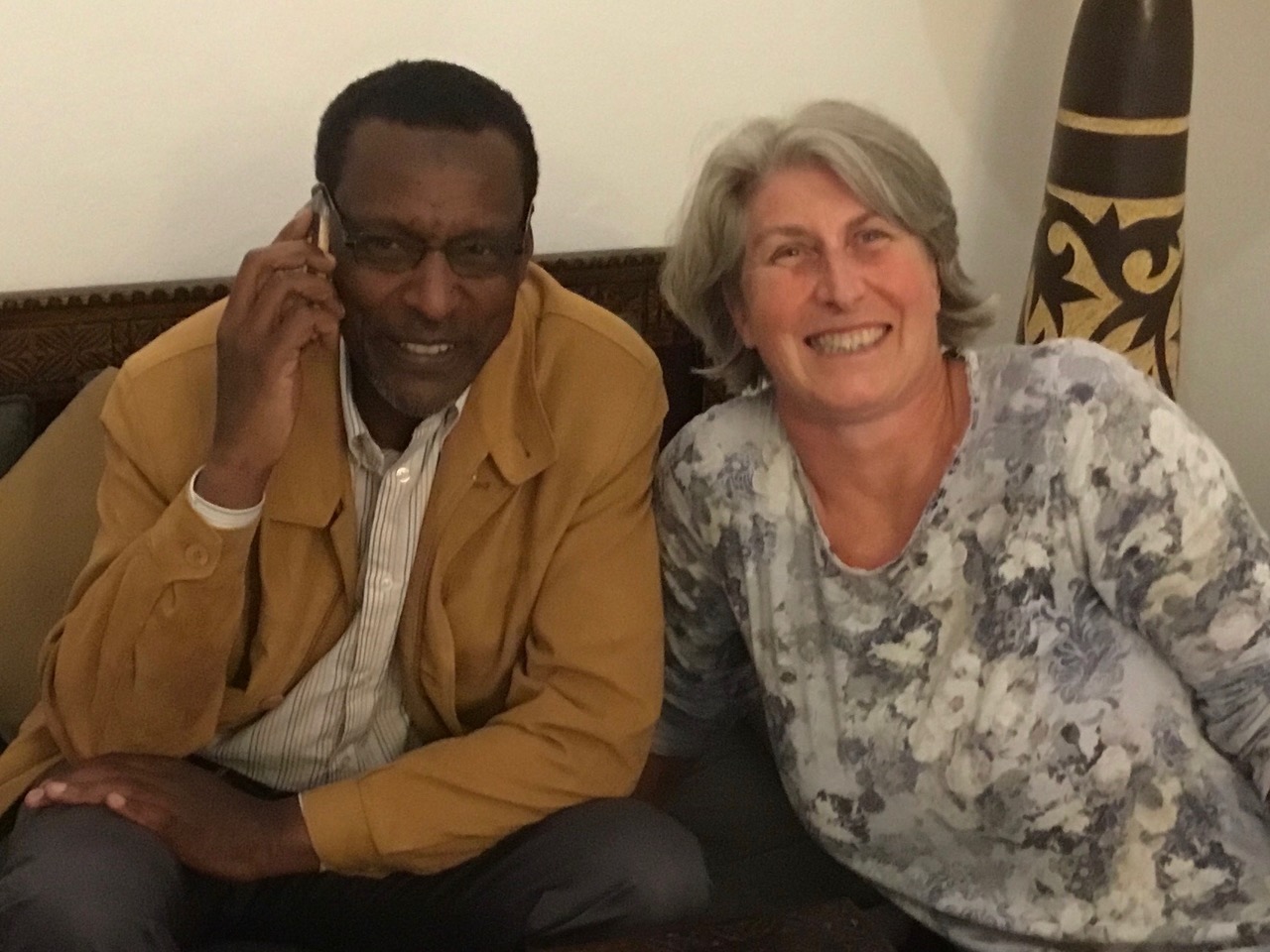 Our guide on this tour is Wendy Smith-Wood (some of you were on our South of France Beadventure with Wendy, as well as took her Shibori class in Alaska). Wendy has put together this itinerary and the following is a message from her:
Our guide on this tour is Wendy Smith-Wood (some of you were on our South of France Beadventure with Wendy, as well as took her Shibori class in Alaska). Wendy has put together this itinerary and the following is a message from her:
“I believe this is a fantastic itinerary—I am really excited to go every single time. I’ve seen a lot of Morocco and have guided there for 35 years.
The choice of locations is my personal preference. I was a mountain guide (the only female guide at the time) in the Moroccan Atlas in the ‘90’s. I trekked widely through the Atlas, Anti-Atlas, and Jebel Sahro. I lived and worked entirely with the Berber. I have been returning to Morocco with groups for 35 years. I speak French fluently and a smattering of Tashelheit (the Berber language), and some Arabic. Our trip out to the Sand Dunes and the camels is a long, long drive but it remains one of the great highlights of the trip (everyone raves about it and always say it’s worth the time on the road) and I wouldn't change it.
Our personal Moroccan guide I have chosen is one of the finest people I have known in my life. He is Haj Calal. He has been a guide for 35 years and speaks good English. He will accompany us throughout. His personal attention, humility, high standards, and gentle demeanor always awe and delight my groups.
Please note that April is the height of the season, so we will see other groups passing through and the famous sightseeing locations will be busy. The upside is that the groups will be varied and international. This itinerary has been designed to make it appropriate for a broad age range of people who are reasonably mobile.”
Trip Cost
45,200 Moroccan Dirhams (about $4,930) for a shared room (click here for currency converter); single supplement 9170 Moroccan Dirhams (about $1,000). Currency will be converted to US dollars at the time of final invoicing (120 days prior to trip start).
Non-beader savings: $125.00
Includes:
- All lodging
- Meals: All breakfasts, 80% of dinners
- Workshop with Kinga
- Airport transfers
- Ground transportation throughout 14 days
- Private guide and interpreter
- Entrance to Ait Ben Haddou
- Camel ride and luxury glamp
- Entrance to Sidi Ben Ali Mausoleum
- Tannery Tour in Taroudant
- Marrakech city tour, museum entry
- All tips
Does Not Include:
- Airfare
- Most lunches, 20% of dinners, beverages, snacks (expected cost of about US$500 for what isn't included)
- Kit for Kinga’s workshop ($195)
- Trip insurance (highly recommended)
- Laundry, Room Service
- Personal services, sundries
To Sign Up
- Review Beadventures' Conditions & Responsibilities
- To guarantee your spot, submit a completed registration form and pay $1,000 deposit
- Final payment will be due 120 days prior to the start of the trip
Trip Notes . . .
General Information About Morocco (Please Read Carefully)
Morocco is a Muslim country, perhaps the most tolerant of the Islamic nations currently. It is an exotic, rich and ancient Islamic culture. Colorful, vibrant, cultured and famous for its crafts and agriculture. The Berbers were historically a poor ethnic minority and their culture reflects this. They are a mountain people and have fiercely defended their unique culture and ethnicity. The word 'barbarian' comes from Berber – they were very fierce fighters. And the Barbary coast was where slaves departed the African shores for America. The Atlas Mountains were a physical barrier between the trade routes of central Africa, the Sahara and the coast. The Berbers controlled the passes and took tithes from the Caravanserai. Nowadays they are a gentle and smiling people. They make their living from tourism and agriculture. Still living in their mountain strongholds, they grow subsistence crops of wheat, barley, vegetables and have herds of sheep and goats. They are also main producers of walnuts, almonds, apricots and the associated oils.
As visitors, our behavior will dictate how we are received and treated by the local people. Wearing appropriate clothing (long baggy trousers (or skirt, if preferred) and long sleeves) means you will be more respected in this society. Morocco has had a lively tourism industry for decades. The Berbers have developed from a third world minority to thrive as tourism providers in the Atlas Mountains
Travel Insurance
You are making a big investment in your upcoming travel. In spite of all your planning, travel can be unpredictable--from cancelled flights to last minute illness. To help protect the investment you are making in your upcoming trip, you are strongly encouraged to purchase trip insurance. Research coverage options by clicking here.
Passport
Check your passport expiration date to make certain it is valid for at least six months beyond the dates of this trip.
Fitness Level
It always is a good idea to be comfortable to walk around for several hours. The souks are huge (miles) and walking a few miles between places is normal in Morocco. Good sturdy shoes and a walking pole often help. We adapt to everyone's fitness level, but you will enjoy the holiday more if you are mobile and have reasonable stamina.
Temperatures
Temperatures in the Atlas in April average 70 to 90 F daytime; 40 to 50 F at night. Along the coast (Essaouira), the average is 70 F high to 58 F low. Suggest you bring a warm top for evenings and loose, baggy, airy clothing for during the day.
Bead Workshop Gear
Remember to bring your customary bead supplies (beading mat, needles, thread, scissors, magnification, and task light). A task light is important (because lighting in the classroom isn’t that great). It’s best if your light is battery-powered because we will not have electric extension cords in the classroom. Your best option is to have a rechargeable power source for your light (so you don’t have to pack lots and lots and lots of extra batteries!).
Money Exchange and Currency
The currency is the Moroccan Dirham—MAD. You can change money with Wendy (she knows a guy!) when you arrive in Morocco. She will get a better rate than in the airport. You will get most of your local currency from an ATM using a card with a chip. If you want to exchange foreign cash then you need clean bills (neat, preferably new $100s; best is US dollars).
Connectivity/Power Adapters
Wi-fi is available at all the hotels and Riads, although often in the cities the system can go down temporarily. Cell reception is good throughout most of the trip (no cell at desert camp). Power Adapters: Type C and E electrical adapters (two round pins) are compatible for Morocco. Voltage is 220V, 50 hertz.
Just in Case--Availability of Medical Services
Both Marrakesh and Ouarzazate have good modern hospitals. Medivac is available, even in the desert and mountains.
About Alcohol Consumption
Alcohol is not easily tolerated in a Muslim country, which means we will be discreet about buying and consuming it. It is very expensive and not available everywhere. No alcohol is allowed in some of the more remote villages.
How Much Cash to Bring
Wendy’s experience is that most people spend approximately US$850+ for purchasing the great local crafts (carpets, marble, and furniture can push this limit higher!) Credit cards can be used for large-ticket items and are increasingly easy to use, even in souks. ATMs are available in the cities. You should depend on a debit card with a chip for cash withdrawal, which is safe and reliable. In addition, US$500 should be enough to cover meals not included (such as lunches), soft drinks, and snacks.
Items You May Wish to Purchase
Should you be looking for suggestions (!?!): antique beads, Berber beads, African beads, carpets, clothing, home furnishings, fabrics, woodwork, metalwork, jewelry, leather goods, perfumes, argan oil, spices, ceramics
Services You May Wish to Enjoy
Spa, massage, Hammam, henna tattoos, laundry
Other Optional Activities
Horse riding, dune buggies, parascending, cooking class

